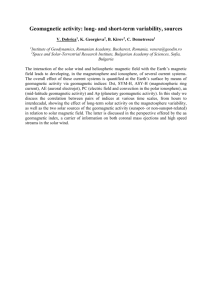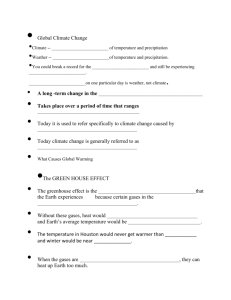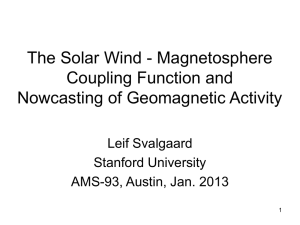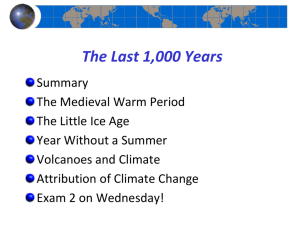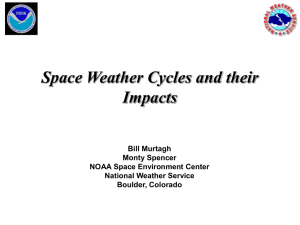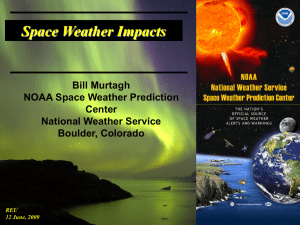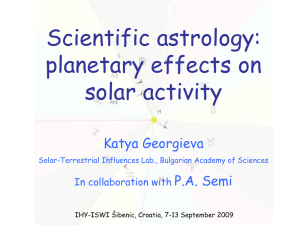Long-Term Variations of Slow Solar Wind Parameters from
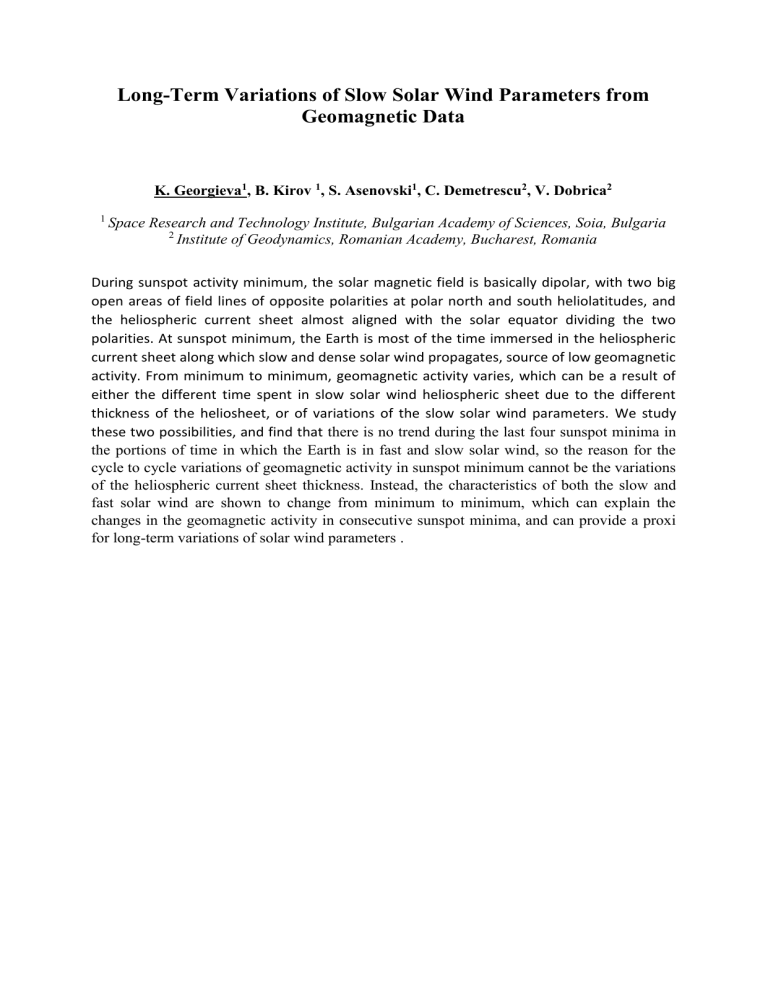
Long-Term Variations of Slow Solar Wind Parameters from
Geomagnetic Data
K. Georgieva 1 , B. Kirov 1 , S. Asenovski 1 , C. Demetrescu 2 , V. Dobrica 2
1
Space Research and Technology Institute, Bulgarian Academy of Sciences, Soia, Bulgaria
2 Institute of Geodynamics, Romanian Academy, Bucharest, Romania
During sunspot activity minimum, the solar magnetic field is basically dipolar, with two big open areas of field lines of opposite polarities at polar north and south heliolatitudes, and the heliospheric current sheet almost aligned with the solar equator dividing the two polarities. At sunspot minimum, the Earth is most of the time immersed in the heliospheric current sheet along which slow and dense solar wind propagates, source of low geomagnetic activity. From minimum to minimum, geomagnetic activity varies, which can be a result of either the different time spent in slow solar wind heliospheric sheet due to the different thickness of the heliosheet, or of variations of the slow solar wind parameters. We study these two possibilities, and find that there is no trend during the last four sunspot minima in the portions of time in which the Earth is in fast and slow solar wind, so the reason for the cycle to cycle variations of geomagnetic activity in sunspot minimum cannot be the variations of the heliospheric current sheet thickness. Instead, the characteristics of both the slow and fast solar wind are shown to change from minimum to minimum, which can explain the changes in the geomagnetic activity in consecutive sunspot minima, and can provide a proxi for long-term variations of solar wind parameters .



